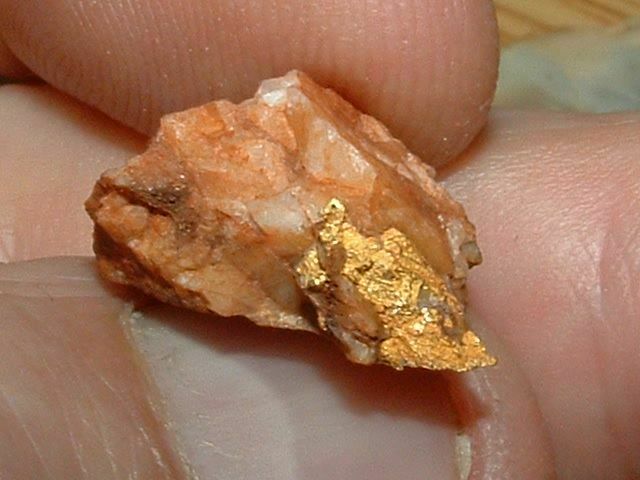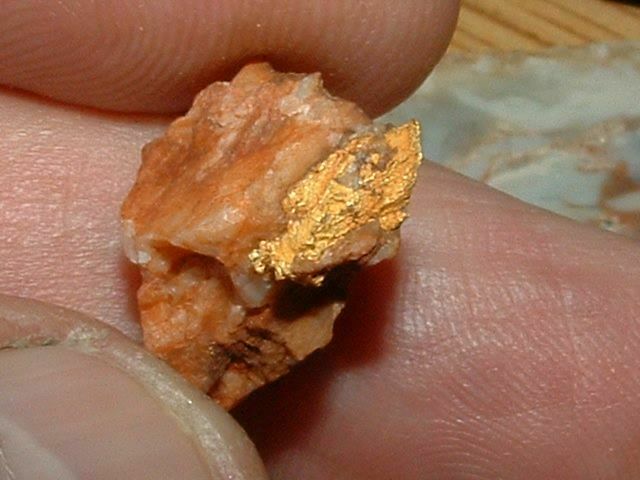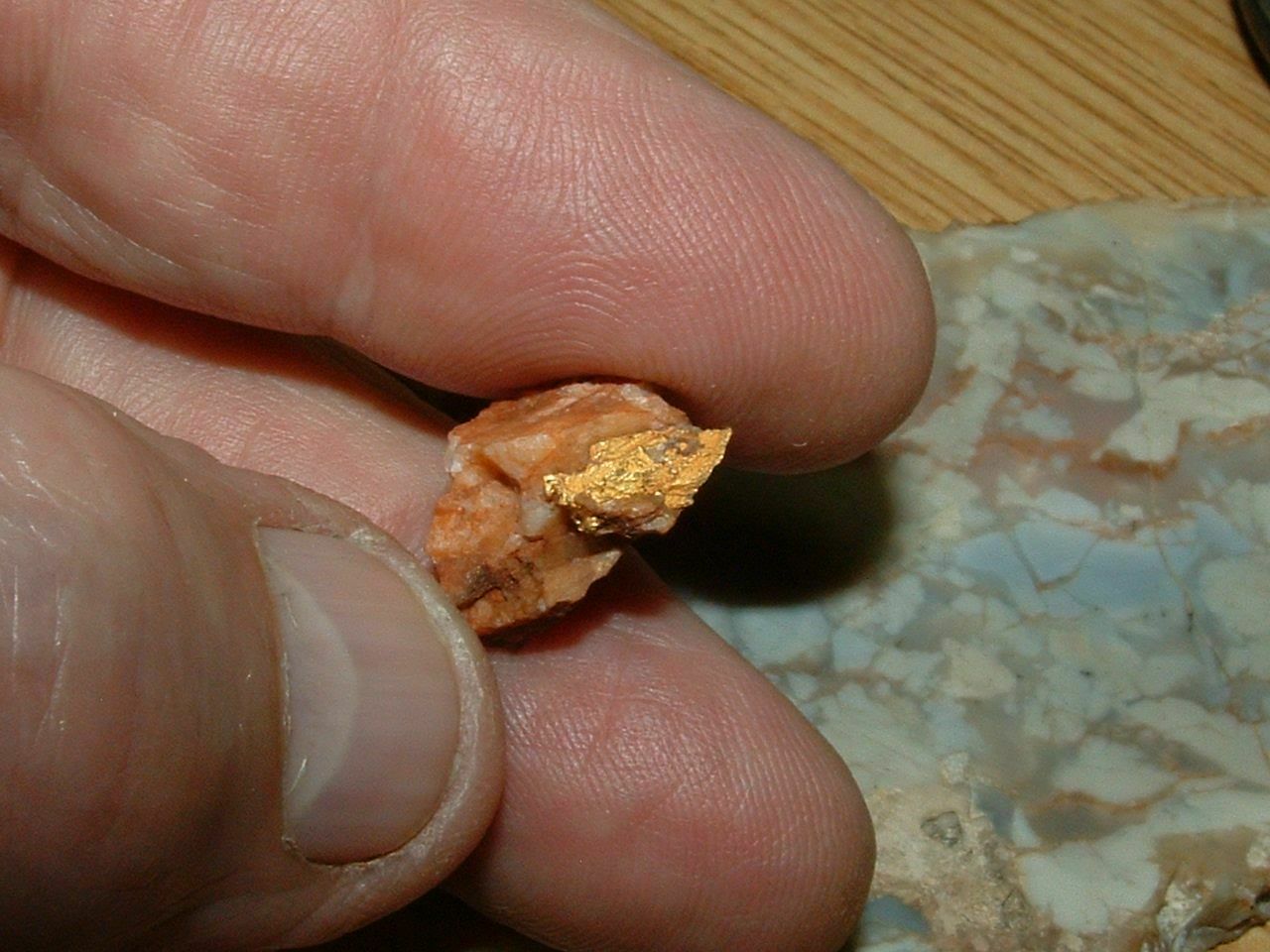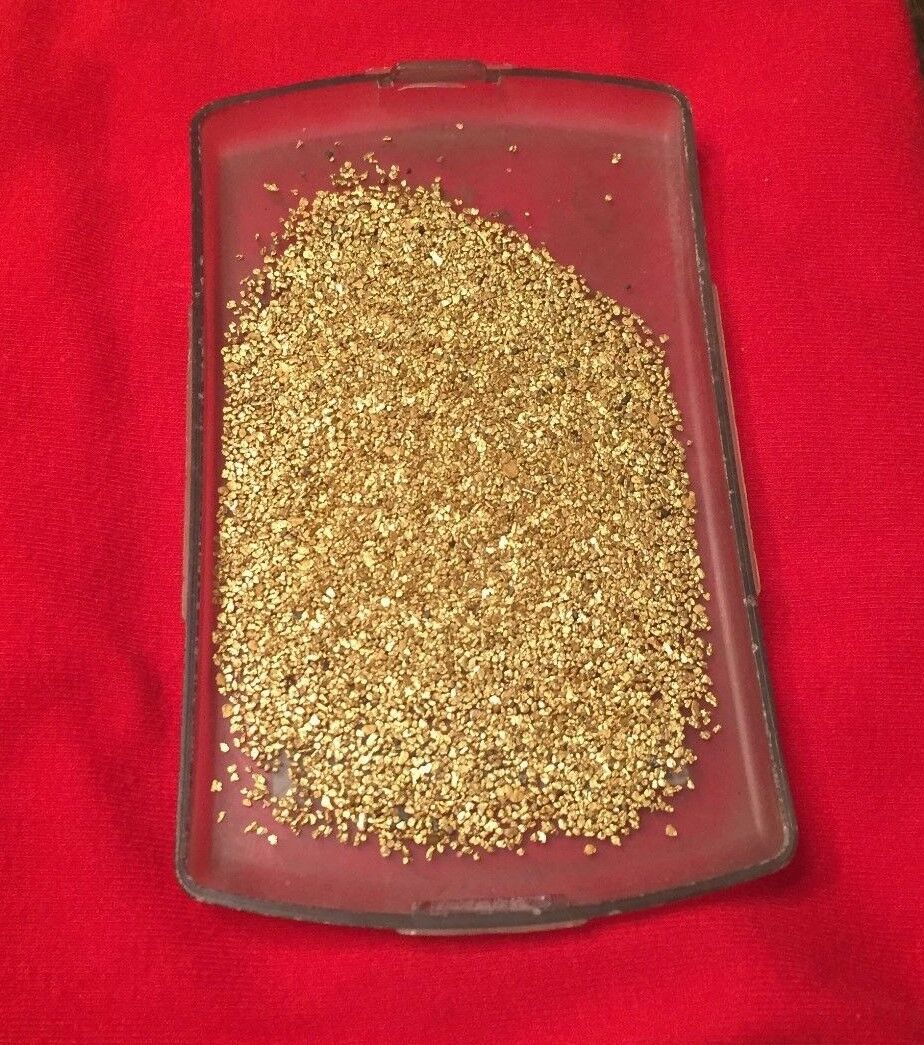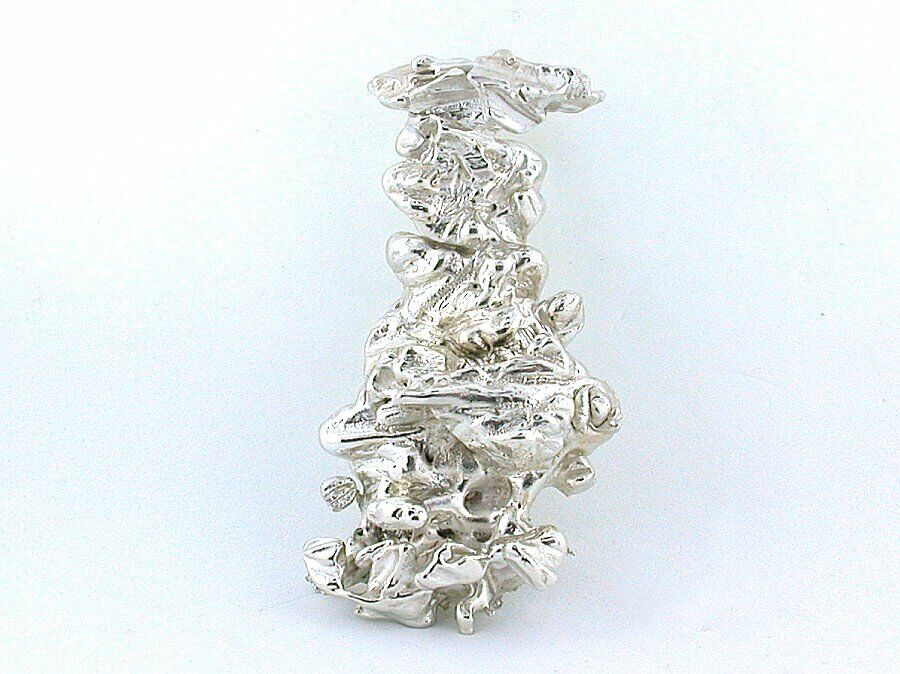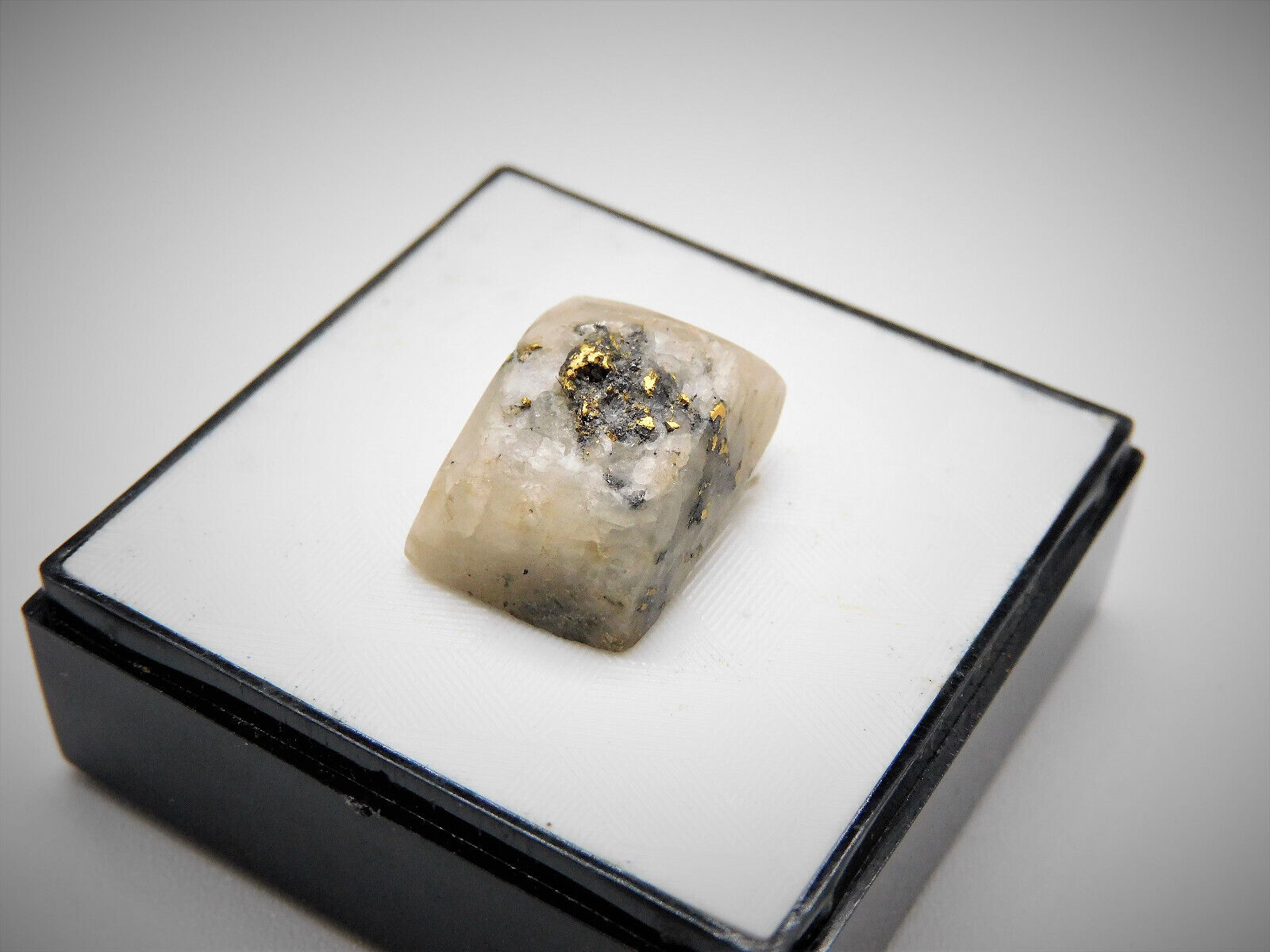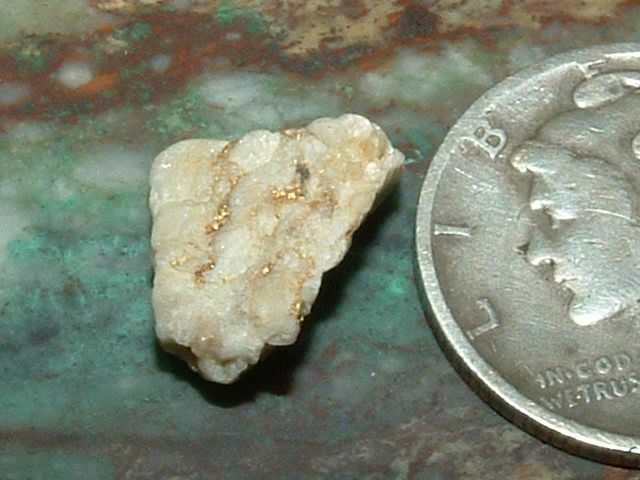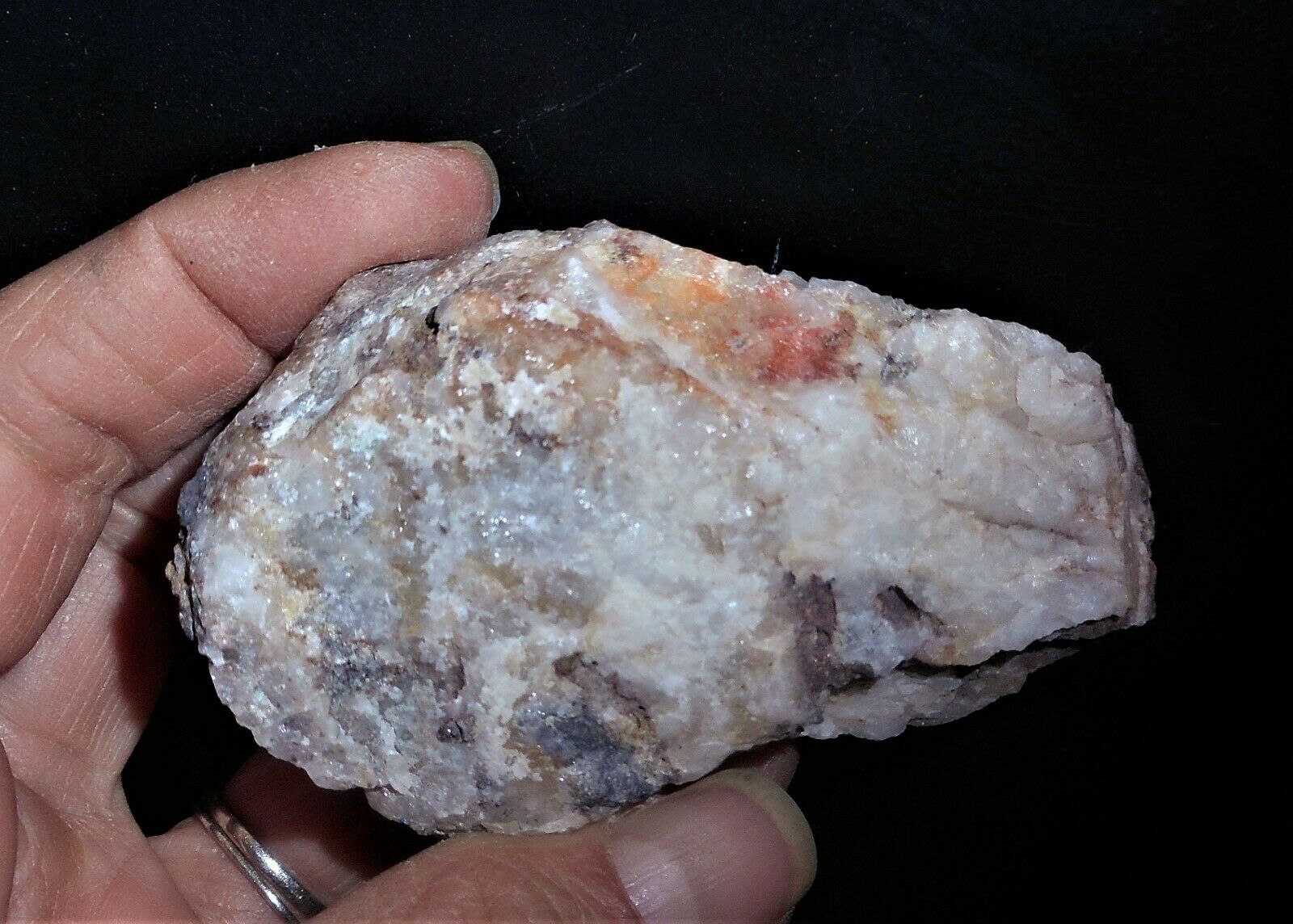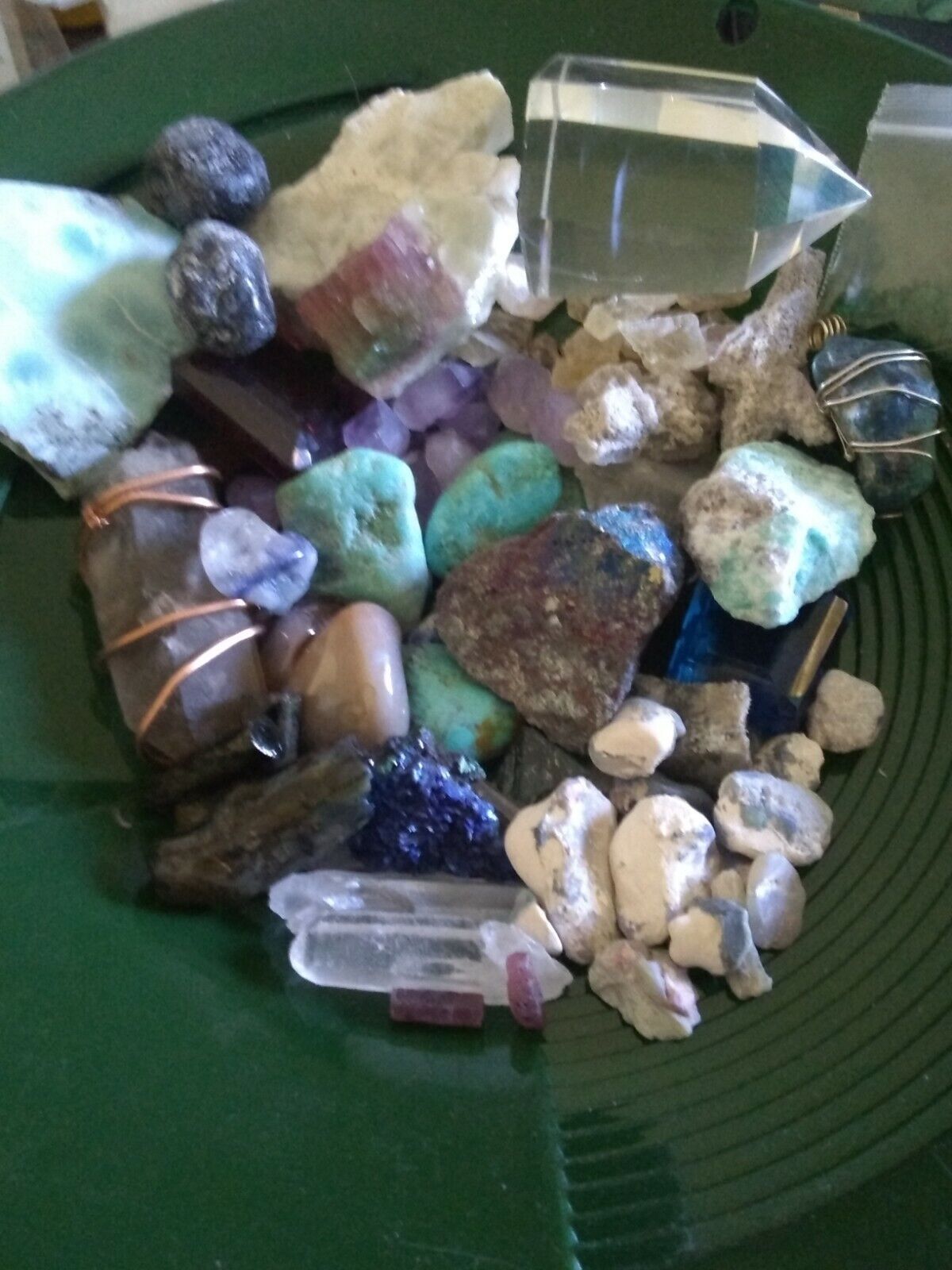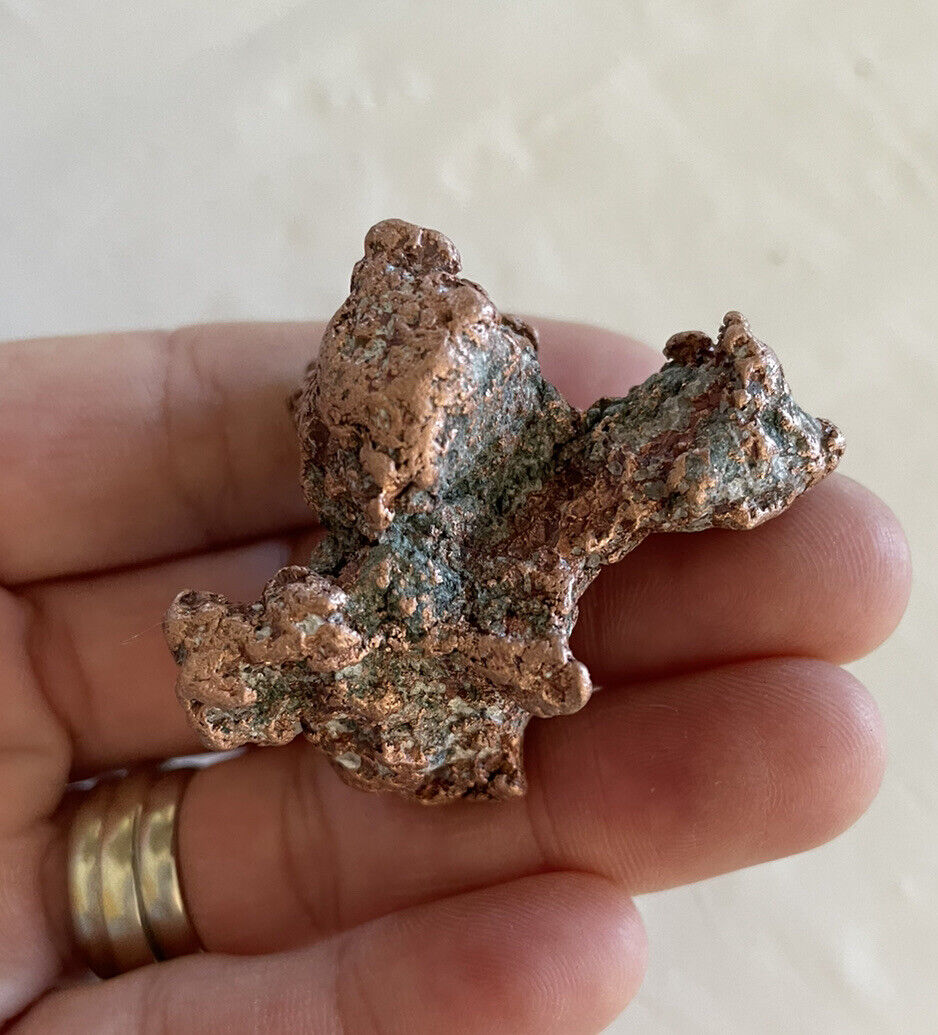-40%
OXIDIZED GOLD QUARTZ SPECIMEN 2.3 GRAM NATURAL CRYSTALLINE GOLD IN QUARTZ
$ 44.88
- Description
- Size Guide
Description
OXIDIZED GOLD QUARTZ SPECIMENfrom the
U.S.
R
uler is
1/4"
wide (6 mm). U.S. 10 cent coin is 17 mm in diameter.
S
pecimen weight:
2.3
G
ram -
35.6 G
rains
S
ize:
15.9X15.8X8.7
mm
Y
es, the gold-colored metal capping one end of this rusty rock is gold. With one notable exception, this highly-oxidized, quartz rock looks like a thousand other pieces I examined while out in the goldfields. Unlike those others, this specimen does not disappoint. Check out the crystalline, high-purity gold bursting from this colorful chunk newly-acquired from the Mother Lode; not large, but a winning find. Abundant rust demonstrates the renowned gold-iron association. Heavy concentrations of iron are, typically, a good gold indicator. Be advised, however, that because an area is rich in iron minerals doesn't necessarily mean gold will be found in proximity to it. The gold flake here may be quite thick judging from the robust signal reported by my metal detector.
Creative forces within the earth's mantle painted this host rock with orange, yellow and a rainbow of other colors. Water, oxygen, and iron were all instrumental in this creation. U.S.A.- source rock offered is naturally-occurring. I did not salt the crystalline gold crystals contained. My source indicates the specimen was found in the Sierra Nevada Mtns.
The gold is ultra-pristine and golden in color. If you've been following my store for a while, you know I've been here a long time and
don't deal in low grade ores. Nor do I sell mega K to K specimens. I've always catered to customers like myself who perhaps can afford only a little taste.
I sell authentic, naturally-occurring gold quartz specimens with visible gold. These high-grade beauties are hard to find and expensive to obtain. My prices are not based upon the amount of gold contained, but upon the authenticity, rarity, and collectability of unique specimens.
U.S. SHIPPING - .00
(includes USPS tracking to all U.S. destinations)
INTERNATIONAL CUSTOMERS S&H
.00
FAST REFUND OFFERED
(If, for any reason, you're not happy with this item)
I poured through old mining dumps for years looking at orange-yellow-rusty rock through a loupe, but I never found a piece with visible gold.
Hydrothermal solutions carrying gold and silica crystallized into veins of gold quartz. This specimen comes from one of the many vein systems sourcing the immense placer deposits of the Sierra Nevada Mtns, the famed Mother Lode.
Weight Conversions:
15.43 GRAINS = 1 GRAM
31.103 GRAMS = 1 TROY OUNCE
24 GRAINS = 1 PENNYWEIGHT (DWT)
20 DWT = 1 TROY OUNCE
480 GRAINS = 1 TROY OUNCE
S & H
Discounted for combined shipments.
U.S. BUYERS & INTNL.
PAYMENTS
For U.S. buyers: We accept paypal
For intnl. customers: We accept paypal.
Pay securely with
www.paypal
.
Payment must be made within 7 days from close of auction. We ship as soon as funds clear. If you have questions, please ask them before bidding.
REFUNDS
We leave no stones unturned insuring our customers get what they bargained for.
If you're not satisfied with this item, contact me. Then, if the problem can't be fixed, return product within 30 days in 'as purchased' condition for a full refund
GOLD PANNING 101-102
D
uring my 19 year stint in the goldfields, I did a fair amount of panning. I used both steel, drop-down pans and plastic pans. My very first nugget was found panning concentrates left over from another operation. Gold panning is primarily a sampling tool and a way to finish concentrates (i.e. cons); not that panning, in certain circumstances, can't be used as a primary production tool. Panning, in and by itself, is a very cool method for introducing placer gold into one's life. My introduction to panning came in the winter of 1980 after reading that it was possible to dry pan gold. Did I find any desert gold? Not that winter.
The following is a 'how to' guide. Maybe there's info here you may find useful.
First, add dirt to your pan. This sedimentary material will, in all likelihood, be a mixture of sand, gravel, dirt, and/or clay. It might be tightly-packed (consolidated) material or it may be fairly loose (unconsolidated). Next, add water.
Submerse your pan underwater completely or fill it up by some other means. Your pan is still held horizontally during this stage. The larger your pan and the fuller it is, the heavier it will be, so, while resting it on the creek-bottom, the ground, a gravel bar, or some other flat surface, thoroughly mix up the dirt with your hands. After larger rocks have been cleaned, discard them (unless they're nuggets the size of hens eggs).
Efficient panning can be a tedious process, so I would recommend that in the beginning, consider filling your pan only half full of dirt. This means you won't have to work so hard breaking up and concentrating your material. By reducing the volume, your slurry can be mixed up easier and faster than if your pan is heaped full.
Your objective is to break up the dirt, get everything agitated and into solution/slurry so that gold, being the heaviest mineral, will sink to the bottom. Disintegrate anything in your pan that breaks apart; that means clay, caliche clods, any kind of concretionary sediments. Vegetation,
like roots and moss, hold inorganic minerals like super fine gold. Moss is famous for catching flour gold. Break it apart!
Then,
Begin to rotate your pan vigorously. Get all the dirt thoroughly mixed up and in motion.
It's not always practical, but if you're panning gold-bearing gravel (real paydirt!), it's not a bad idea to use a catch-basin like a washtub, rubber tub, cattle trough, et al. This way, you can double-check your results. Re-panning all the contents would be extremely slow-going, so for re-checking your results, I recommend re-concentrating this material by running it through a dredge sluice, a regular sluice box, or a rocker box. Using any of these processes speeds up the process considerably. If the weather's hot enough to dry out your dirt, you might even run this material back through a drywasher.
Once you get a feel for panning, increase your speed and force. The more aggressive the motion, the faster your gold will drop. Avoid sloshing any dirt out.
Learning these ropes can take a while, but with a little practice, you'll soon be panning like a pro. I must emphasize all the material must be broken up, dissolved, and put into solution or the gold inside won't settle out. Remember, it could be very fine gold requiring considerable agitation forcing it to sink through the mud, clay, lime, slime, or compacted-vegetable material. In short, it's imperative you mix and shake your loaded pan thoroughly.
Once you get the hang of it, see results, and develop speed, you might feel skookum enough to fill your pan to the rim. From the standpoint of optimizing your recovery, though, even expert panners are better served panning less dirt.
The elimination process: Continue with your circular shuffling of the pan's contents. Gradually start tipping the pan away from you. Lighter material (including larger rocks) now will be closer to the top. This upper portion of the load can be skimmed or scraped over the rim of your slightly tilted pan with a flattened hand. Best to do this underwater. If you think your dirt's throughly shaken, stirred, and dissolved, you should be able to rake a large amount off the top without fear of losing any gold.
As you spin and tip your pan, gold that's settled to the bottom will start crawling upwards into the ejectibles and towards the lip. To nip this in the bud, after you've palmed off a good-sized portion of dirt, return your pan back to the horizontal position again all the while shaking it. Any gold collected should return to the lowest zone in your pan. It's no different then gold tumbling down along bedrock in a creek. Hydraulic forces and gravity cause it to find the deepest cracks and crevices.
Now we're finally down to the nitty-gritty. Repeat the tipping and raking process until you've about half a cup of material. With pan slightly tilted, slowly swirl water over the heavies; this concentrate will most likely consist of iron ore nodules (mainly magnetite and hematite), other high specific gravity minerals, and fine, black sands (more magnetite and hematite). Places like Idaho produce huge amounts of heavy 'ruby sands' which is, basically, garnet.
If you haven't yet seen gold in your pan, pour off excess water until just enough is left to barely cover your concentrates. Swirl the pan stringing out the concentrates. Lighter particles will be washed away first leaving the gold (because it is the heaviest) in the 'tail' of the black sand concentrate.
Continue swirling water in the pan to further clean the concentrates being careful not to lose any gold. Recovering gold by panning takes practice galore, but is a skill which must be mastered if one is to become proficient at prospecting.
Thanks for checking out our digs.
G
old of
E
ldorado
1-14-13

